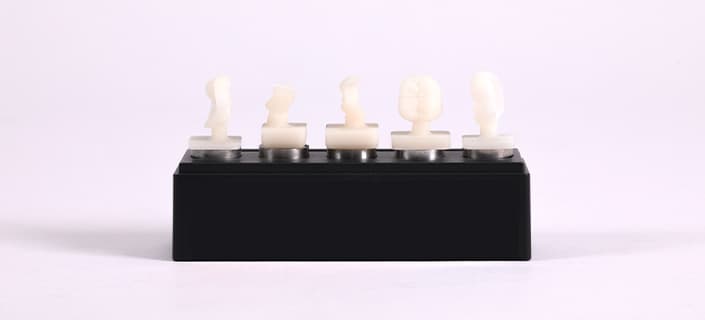4. Conclusion: Zirconium oxide in the field of tension between claim and reality
Zirconium oxide is emblematic of the technological development in the dental CAD/CAM world: enormous potential, but also complex requirements. If you want to use the material efficiently and successfully, you need in-depth knowledge of the material properties, a suitable digital infrastructure and well-coordinated machine and tool technology.
The zirconium oxide paradox - the gap between theoretical versatility and practical implementation - can only be closed through knowledge transfer, training and targeted investment. For laboratories and dental practices, this means that those who work intensively with the material and invest in consistent processes will benefit in the long term from stable results, high efficiency and satisfied patients.
Discover our solutions for digital dental technology now: imes-icore.com/dental
Do you have any questions? Contact us using our form: imes-icore.com/contact
Stay informed - subscribe to our newsletter: imes-icore.com/newsletter
FAQ: Zirconium oxide in dental technology
What is the biggest advantage of zirconium oxide in dental technology?
Zirconium oxide offers an excellent combination of stability, biocompatibility and esthetics, which is ideal for many indications in dental restorations.
What are the differences between different generations of zirconia?
Earlier generations are characterized by high strength, while newer variants allow for more translucency and aesthetics - often at the expense of mechanical robustness.
How can I choose the right zirconium oxide for my laboratory?
The selection should be based on the indication and take into account both the esthetic requirements and the functional properties. Manufacturer data sheets and empirical values help with the decision.
Which machines are suitable for processing zirconium oxide?
Systems with high rigidity, precise axis guidance and a specific CAM strategy offer the best conditions for reliable processing.
How important is the interaction between software and material?
Extremely important: High-quality and cost-effective results can only be achieved if the software, milling machine and zirconium oxide are perfectly coordinated.
What is the best way to minimize tool wear?
By using high-quality tools, regular checks and the use of intelligent CAM systems with automated change strategies.
